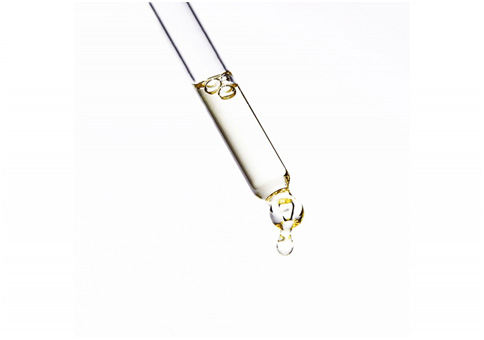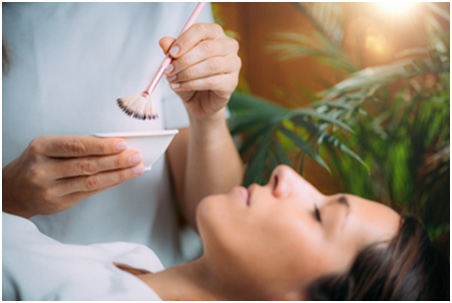
What are in-clinic chemical peels and how safe are they for the skin
October,08,2021
Whoever said the answer to clear and glowing skin lies in a chemical peel, really knew what they were talking about. Over the last decade, this once scary sounding procedure has gained popularity like a TikTok celebrity. Chemical peels and acids are probably the quickest way to make your skin feel and look good. And the best part? There’s literally a peel out there for every skin concern –– yes, every skin concern. While at-home peels and acids really do serve their purpose well (we’re looking at you AHA/BHA peel), it’s actually the in-clinic treatments that work visible miracles in a jiffy. In-clinic chemical peels and its respective posse of acids all come in different strengths that penetrate through different layers of your skin. It depends on various factors including the concentration of the ingredients, skin texture and thickness, and the purpose of the peel. Think of it as a hierarchy in an office –– you have the mild peels who are the juniors and meet the most basic job requirements, then you have the medium peels that are little more experienced and can tackle way more than the juniors, and lastly, you have deep peels who are the superbosses that truly mean business. Now, which one you choose to use depends on the intensity of your requirements and how quickly you want them.
What: Mild & Superficial Peels
Who: Everyone
In detail: These are exfoliating peels that remove dead skin from the surface. This is done by gently dissolving your skin’s glues that keep dead skin stuck to the fresh skin. By using a mild peel, you break down that glue and remove the dead skin and encourage healthier growth. They mostly contain fermented fruit acids such as apples, sugarcane, grapes, and milk acids such as lactose and salicylic from birch extracts.

Popular choice:
Lactic - A mild exfoliant, lactic acid peels do not penetrate deep into the skin and is therefore a great starter peel! It barely irritates the skin and is known to be compatible with every skin type out there, including sensitive skin. Its main job is to brighten and hydrate.
Glycolic - Concentration is key with this one –– the higher the concentration the more this peel can move into the deep peels category. But if you want just basic exfoliation, then in smaller concentrations glycolic will do the trick.
BHA (salicylic) - If you’re suffering from acne-prone, oily skin then BHAs such as salicylic acid work wonders for the skin. BHAs are oil dissolving, which means they effectively remove and cleanse oils and bacteria that lurk within your pores. It’s anti-inflammatory too, which means bye bye pimples!

What: Medium peels
Who: Deep treatment for pigmentation, uneven texture, premature signs of ageing, damaged skin
In detail: These peels are like those best friends who try and solve your issues at a deeper level (not just the surface). They take care of your pigmentation, even out your skin’s texture, and rebuild collagen and elastic, that renews your skin’s elasticity. If you tend to get bogged down by pollution, smoking, or free radicals, then medium peels are great to combat damaged skin. Since they are a tad intense and need more down time, they need to be carried out by professionals and are only done under medical supervision.
Popular choice:
TCA Peels - Meet TCA, aka its formal name Trichloroacetic Acid. TCA peels take on the responsibility of reducing pigmentation marks, sun damage, acne scars, and line and wrinkles.
Jessner’s Peel - This peel isn’t a one-size fit all kind of peel. Modified versions of this peel are used to tackle different skin conditions –– it comprises a mix of lactic and salicylic acids, and resorcinol in different concentrations. In fact, most doctors make their own concoctions by adding other acids to make the peel stronger and more potent.

What: Deep peels
Who: A prescribed treatment for underlying skin issues like deep lines and wrinkles
In detail: These peels are mean, and they mean business. They don’t faff about, they get straight to the point. Deep peels penetrate into the deepest and most sensitive areas of the skin. Because of their potent nature, they are only done under the supervision of a doctor –– with a proper pre and post care routine in place.
Popular choice:
Phenol Peel - This scary sounding peel is the MVP of peels. It’s strong and provides dramatic results. However, it usually doesn’t get along with darker skin tones, as the chances of hyperpigmentation due to inflammations are a higher risk.
Cosmelan Peel - The true depigmentation peel, Cosmelan easily takes care of all those pesky pigmentation marks, acne marks and scars. It’s powers are still unmatched! It dives deep into the layers of your skin and treats melasma, inflammatory pigmentation, age spots, and freckles. It’s in-demand across the globe and is the best-seller peel in aesthetic clinics worldwide.
Due to its potent nature, chemical peels often tend to get a bad reputation. Thanks to the word ‘chemical’ everyone assumes that this skincare MVP is somewhat of an antagonist for your skincare’s love story. But that is not the case. If done correctly and by trained professionals, you will be able to understand how effective each and every peel is –– depending on its concentration and how deep it penetrates into your skin. Not all of them cause you to peel and shed like a snake, and even if you do, know that it’s for the best (and in the long run, you’ll be happy you did). If you’re looking for results, chemical peels are the best way forward –– if you choose wisely and carry it out with an expert, you won’t regret your decision!
To learn more about peels or to book your consultation with our doctors:
Call: +91 2242792222
Whatsapp: +91 7900166222
Email: wecare@theagelessclinic.com
